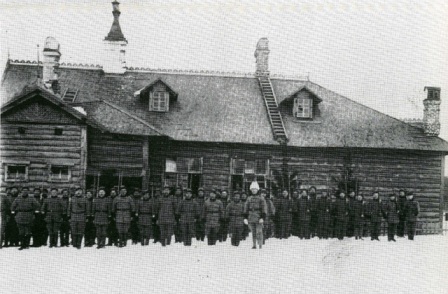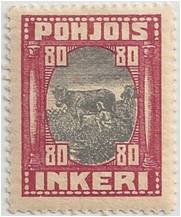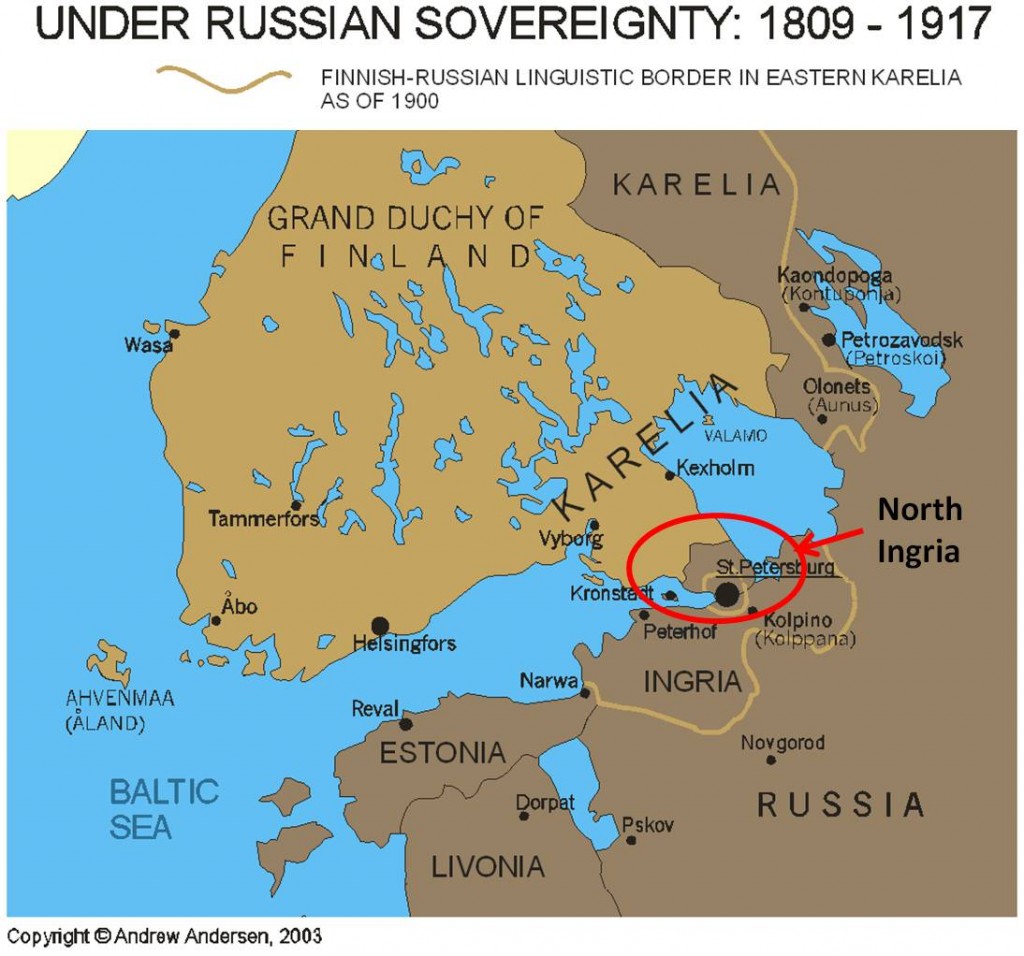ALBUM – view my North Ingria Album
TRANSITION CHART – North and West Russia (including Finland)
Fast Facts
Region: Russia Area
Group: Finnish Area
Classification: Revolution
Prior Regime: Russian Soviet Federative Socialist Republic
Key Dates:
1917, Dec 6 – Finland declares independence from Russia
1918, Dec – Republic of Finland is formed with the defeat of the Germans in WW1
1919, July – North Ingrian Interim Committee is formed
1920, Jan 23, Republic of North Ingria is formed, declaring independence from Russia
1920, Oct 14 – Treaty of Tartu signed agreeing on final borders between Finland and Russia
1920, Dec 5 – the Republic of North Ingria ceased existence and North Ingrian Regiment withdrew to Finland
Following Regime: Russian Soviet Federative Socialist Republic
Scott Catalogue: (Russia, North Ingermanland) #1-14
Pick Catalogue: none
History

On 6 Dec, 1917, shortly after the October Revolution in Russia, Finland declared independence from the Russians. After a brief civil war between the reds (Bolsheviks) and the whites (ant-Bolsheviks) the Germans intervened, giving victory to the whites, and declared Finland as a Protectorate of the German Empire. After the defeat of Germany in World War 1 on Nov 1918, Finland became an independent Democratic Republic with the first parliamentary election being held on 3 Mar, 1919.
North Ingria (Pohjois Inkerin in Finnish and Ingermanland in Swedish) is an area around St. Petersburg (Petrograd at the time) and north, located between Lake Ladoga and the Gulf of Finland. The majority of the population had strong cultural and linguistic affinity with Finland. After the revolution and the subsequent independence of Finland, the inhabitants rebelled against the revolutionary government of Russia.
As the Bolsheviks were fighting across Russia to consolidate power, many Finns in the North Ingria region were displaced. Many of the refugees organized the North Ingrian Interim Committee in July, 1919 to fight against the growing Red power in Northern Ingria, and to ultimately unite with Finland. The Finnish government encouraged the group, even providing weapons to support their “self-defense”. To the Finns, this would help form a buffer zone between Finland and Russia in the ongoing Finnish war for independence.
On 23 January, 1920, the Republic of North Ingria (Pohjois Inkerin tasavalta) was declared, and would be defended by the North Ingrian Regiment. Although dreams were high, in reality the area controlled by the Regiment was fairly small. While Finland never “officially” supported North Ingria, as not to anger the Russians, they did support the movement with border control and financial support.
As Russian Bolshevik forces were consolidating power, their focus turned north, and the North Ingrian Regiment were overwhelmed by the stronger Russian forces. Refugees in the area fled north to Finland, as did the retreating North Ingrian Regiment. At the same time, the Finns were negotiating with the Russians over borders from July, 1920, and on 14 Aug, 1920, the Treaty of Tartu was signed. The borders agreed in the treaty, gave North Ingria and Aunus to the Russians, as well as splitting the Karalia region.
On 6 Dec, 1920, the Flag of the Republic of North Ingria was lowered, and the North Ingrian Regiment withdrew to Finland to be disarmed. The Treaty of Tartu took final effect on 31 Dec, 1920.
Stamps
 ALBUM
ALBUM
During the short lifespan of the Republic of North Ingria, two sets of stamps were issued. As with many fledgling nations during this period, the stamps were issued to establish legitimacy, as well as provide a source of revenue, by selling to stamp dealers and collectors around the world. The first set of stamps were issued on 21 March, 1920, and featured the North Ingria coat of arms. Eight denominations (5 penni – 10 marks) were issued and the stamp was similar in design to Finnish definitive stamps.
A second set of stamps, featuring a series of 7 pictorial designs was issued on 2 Aug, 1920. The set is beautifully designed, especially based on the situation of the day. The pictorials have been extensively forged.
North Ingria stamps were in use from 21 Mar – 5 Dec, 1920.
Banknotes
none
Links
Ingram is on fire. Little-known episode of the White movement – in Russian (use Google translate)
Ingria from Wikipedia
Comparative Forgery Identification Site for North Ingermanland Stamps






This is a comment in regard to the German interference in the aftermath of the Finnish Civil War:
The German part – although important – was not as critical as your article makes it sound like. Wrong information about this can be found in places like Wikipedia, usually in Russian efforts/campaign to portray the Finns as Nazi-sympathizers during World War Two.
In all practical terms, the Finnish Civil War was already outfought – it was over – when German units landed in Southern Finland in the springtime of 1918. The Marshal of Finland Mannerheim has stated, that it was unnecessary for the Finns to allow the German participation to take place. Mannerheim was against the permitting of the German interference. Mannerheim himself had fought the Germans as a general of Russian Armed Forces during World War One.
However, c. 1750 (?) Finns had secretly been trained in the Armed Forces of Germany, due to the anticipated Red threat. This led to the permit – or invitation – for the German landing to be given a go-ahead.
Thank you for your nice site.
Alexandr
Thank you for your feedback and careful reading. I will do a little more research into the subject and modify as appropriate. I really appreciate comments and feedback on my articles, as I strive to be balanced and accurate.
I am also glad you enjoyed the site.
Michael
You are welcome – my pleasure, and thank you again for providing this interesting site, Michael.